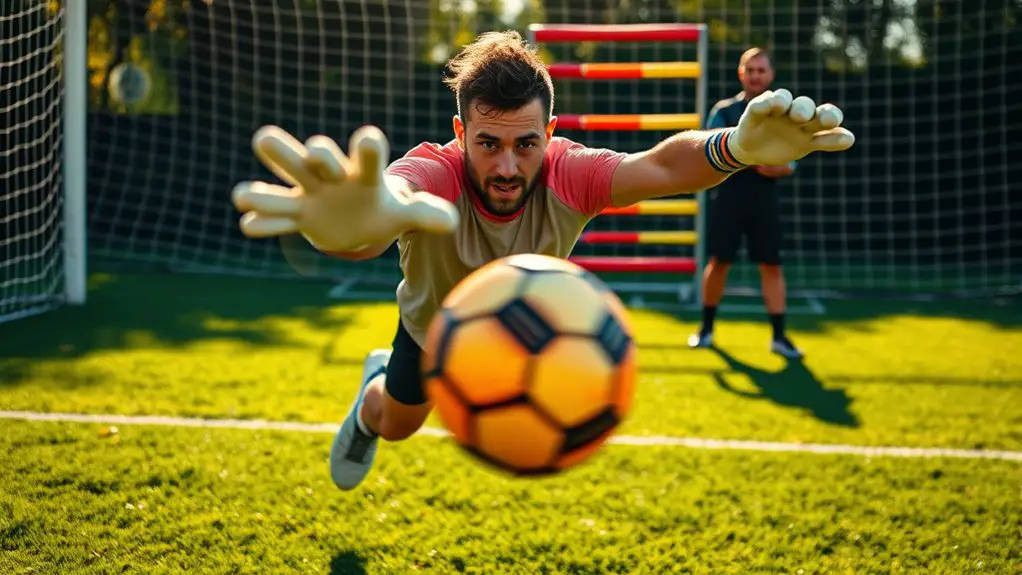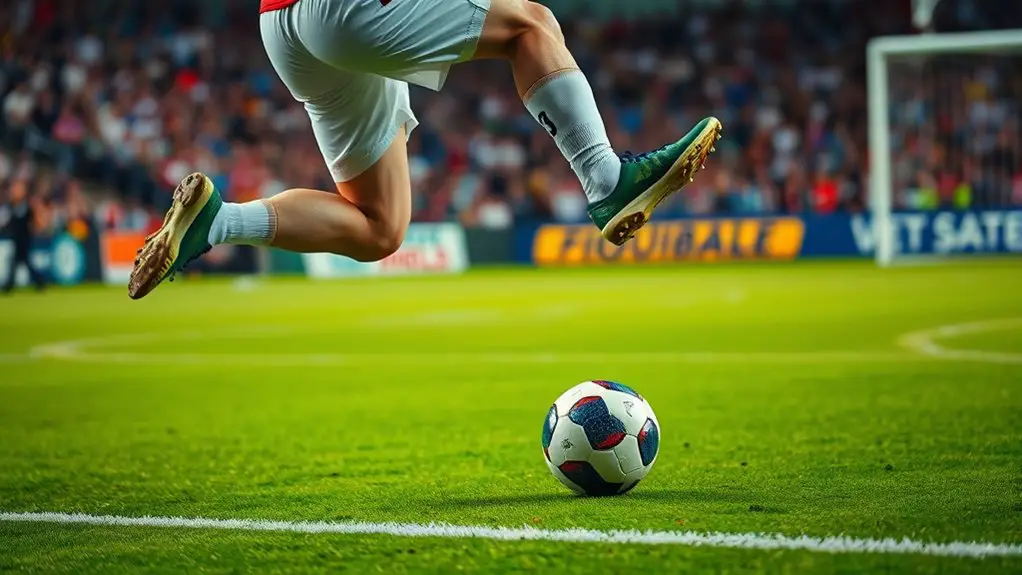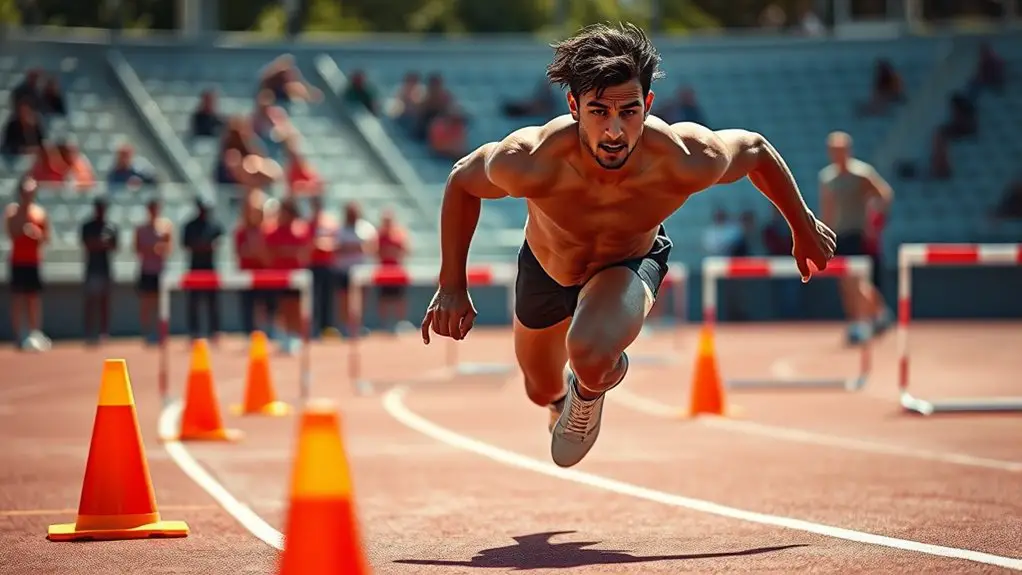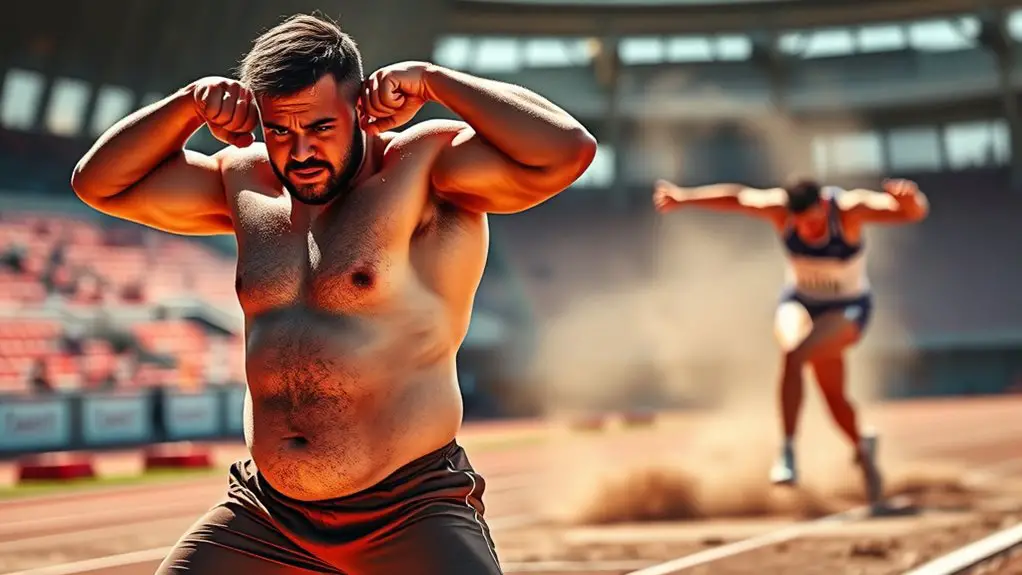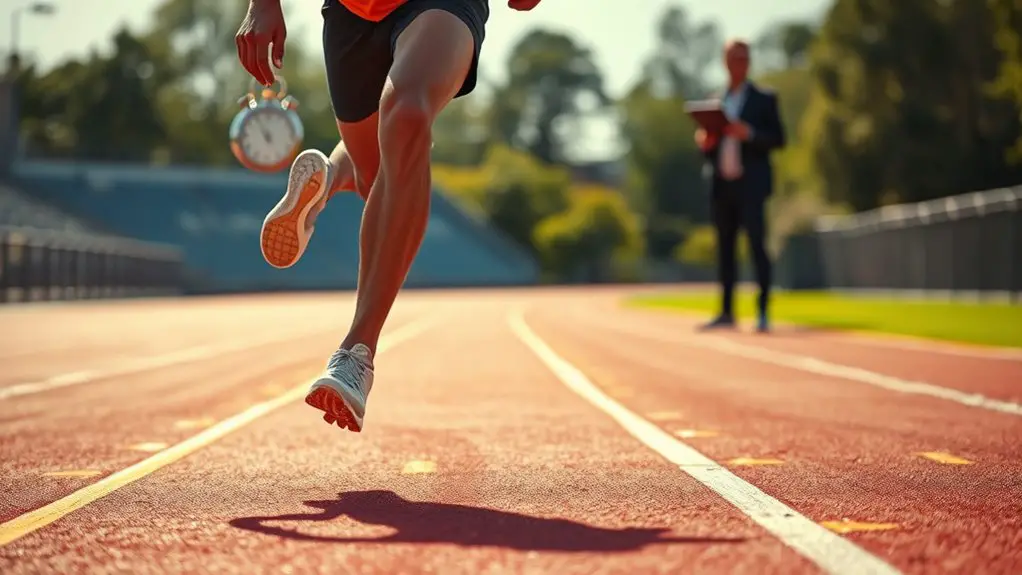To train your reaction time as a goalkeeper, focus on specific drills like reaction ball exercises, lateral movements, and dive drills. Incorporate technology, such as training apps and wearable sensors, to monitor your progress. Utilize mental techniques like visualization and mindfulness to enhance quick decision-making. Regularly evaluate your improvements and set measurable goals to stay motivated. With consistent practice and the right tools, you can become quicker and more agile in net, discovering even more ways to boost your performance.
Understanding the Importance of Reaction Time in Goalkeeping
In goalkeeping, split-second decisions can make all the difference between a save and a goal. Your reaction time is essential; it's the heartbeat of your performance. When that ball's flying towards you, you can't afford to hesitate. A quick response often means the difference between an exhilarating save and a disappointing miss.
Understanding this importance shapes your mindset. You're not just a last line of defense; you're the one who can turn the tide of a game. Every moment counts, and with improved reaction times, you'll feel empowered to seize those vital opportunities. Mental alertness and awareness enhances your reaction time significantly, allowing you to better anticipate movements.
The freedom you experience on the field comes from knowing you can trust your instincts. You'll be ready to dive, leap, or shift in an instant, ensuring you're always where you need to be. Embrace this responsibility, and let it fuel your determination to become the best goalkeeper you can be.
Essential Drills to Improve Reflexes
Sharpening your reflexes is essential for any goalkeeper looking to elevate their game. Start with reaction ball drills; these unpredictable bouncing balls will challenge your instincts. Toss one against a wall and react quickly to catch it. Another effective drill is the "two-ball" exercise: have a partner throw two balls simultaneously, forcing you to react to both.
Additionally, incorporate lateral movement drills. Use cones to set up a quick shuttle run, sprinting side to side while catching balls tossed by a teammate.
Finally, practice dive drills where a coach or teammate shoots at you from various angles. This builds muscle memory and enhances your reaction time under pressure. Consistent practice of these exercises leads to significant reflex improvements that can elevate your performance on the field.
Incorporating Technology Into Training
As you look to enhance your reaction time, incorporating technology into your training regimen can make a significant difference. Using the right tools not only boosts your performance but also gives you a sense of freedom and confidence on the field. Here are some ways technology can elevate your training:
Incorporating technology into your training can significantly boost performance and enhance your confidence on the field.
- Reaction Training Apps: These apps provide real-time feedback, helping you gauge your progress and make adjustments quickly.
- Wearable Sensors: By tracking your movements, these devices offer insights into your speed and agility, allowing you to refine your technique.
- Virtual Reality Simulations: Engaging in VR training can immerse you in game-like scenarios, sharpening your reflexes in a controlled environment. Additionally, incorporating smart wearables into your routine can further enhance your training by providing continuous monitoring of your performance metrics.
Embracing these technologies can transform your practice sessions into powerful experiences, helping you release your full potential and react instinctively when it matters most.
Mental Techniques for Enhancing Reaction Speed
Harnessing technology is just one piece of the puzzle when it comes to improving your reaction speed. Mental techniques can play a significant role in sharpening your instincts. Visualization is one powerful method; picture yourself in various game scenarios, reacting swiftly and confidently. This trains your brain to respond faster when it counts.
Another technique is mindfulness. By staying present, you can better anticipate actions, reducing reaction time. Additionally, practice decision-making drills to enhance your ability to choose the right action under pressure. Incorporating positive affirmations into your routine can further boost your confidence, allowing you to respond effectively in critical moments.
Here's a quick overview of these techniques:
| Technique | Purpose | Benefit |
|---|---|---|
| Visualization | Scene rehearsal | Improved anticipation |
| Mindfulness | Focus on the moment | Enhanced awareness |
| Decision-making | Quick choices | Faster reaction execution |
Incorporating these methods into your routine can free you from hesitation, allowing your instincts to take over when it matters most.
Evaluating Your Progress and Setting Goals
To effectively enhance your reaction time, it is crucial to regularly evaluate your progress and set achievable goals. This not only keeps you motivated but also allows you to track your improvements. Reflect on what you've accomplished and identify areas for growth.
Here are some tips to make the most of your evaluation process:
- Celebrate small victories; they build your confidence and fuel your passion.
- Be honest about your weaknesses; acknowledging them is the first step to freedom.
- Set specific, measurable goals to keep your training focused and purposeful. Additionally, learning from failure during your evaluation can help you identify areas for improvement and encourage a growth mindset.
Frequently Asked Questions
What Age Should Goalkeepers Start Training Their Reaction Time?
You should start focusing on reaction time as early as possible, ideally around age 10. Developing these skills early not only enhances performance, but also cultivates a sense of freedom and confidence in your abilities.
Can Diet Influence a Goalkeeper's Reaction Time?
Yes, diet can influence your reaction time. Foods rich in antioxidants and omega-3 fatty acids can enhance brain function, improving your alertness and response speed. So, fueling your body right can make a real difference.
How Often Should Reaction Time Training Be Done?
You should incorporate reaction time training into your routine at least two to three times a week. Consistency helps sharpen your skills, allowing you to enjoy the freedom of improved performance and quicker responses.
Are There Specific Exercises for Different Types of Saves?
You can use various drills like wall rebounds, cone sprints, and reaction balls. Each targets specific saves, letting you enhance your skills while enjoying the freedom to adapt exercises to your unique style.
What Common Mistakes Hinder Reaction Time Improvement?
Common mistakes that hinder reaction time improvement include lack of focus, inconsistent practice, and poor technique. You're not alone in this; many struggle with these issues, but addressing them can lead to significant progress.
